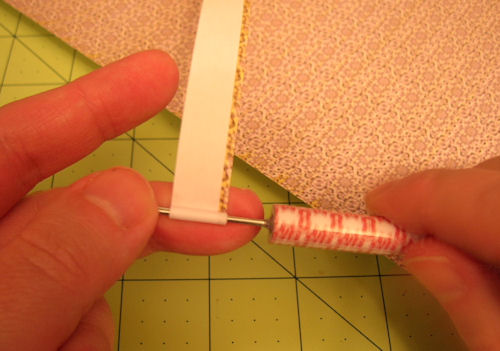
How to Make Roundish Paper Beads
Written by Julie A. BolducThese instructions are for making roundish paper beads from any type of paper. The basic techniques are the same no matter what paper you use or what the thickness of the paper is that you use. Just remember there is no system that will make perfectly round beads every time. These are basic instructions and not all strips will come to a point at one end. Basically, you make your wide end the same width as the thickness of the bead you are making and the narrow end is 1 degree smaller than the wide end. So your beads will be roundish, not perfectly round every time.
What you Need
- Any Paper
- Measuring Tools: Ruler, calipers if you have one!
- Protractor for measuring the 1 degree smaller end.
- Pencil
- Scissors or other way to cut your strips
- You can use a guillotine cutter or a rotary cutter, quilters ruler and cutting mat.
Get your Paper Ready

Step 1: Determine what length paper you are going to use and stick to that length. To determine how big a round bead you can get from this length. Cut a half inch wide straight strip from this paper. Remember which side you cut the strip from and only cut this paper on that side.
As you can see in the picture, I use a quilters ruler, rotary cutter and cutting mat to cut my paper into strips. The ruler has 1/8, 1/4, 1/2 inch markings which makes it so much easier to mark the paper and cut it accurately.
Roll Your Test Bead

Step 2: Roll your bead on which ever bead roller you want to use for the desired size hole you want. Set bead aside for a moment.
Determining the Width of the Diameter
Step 3: Meaure your rolled bead A great and accurate way of getting the diameter of the bead is to use a drill bit guide! I have a plastic one I now use to get the diameter of my beads! I just stick the rolled up unfinished bead in the holes until I find the one that fits perfectly. You can get one at any local hardware store or at Amazon.com! You can also use calipers if you have one to get a most precise measurement.
A great and accurate way of getting the diameter of the bead is to use a drill bit guide! I have a plastic one I now use to get the diameter of my beads! I just stick the rolled up unfinished bead in the holes until I find the one that fits perfectly. You can get one at any local hardware store or at Amazon.com! You can also use calipers if you have one to get a most precise measurement.

If you don't have a Drill Bit Gauge, you can use a ruler. Place your ruler in front of you on your work surface. Place one of the flat ends of the bead on your ruler to measure how wide or thick your bead is. This measurement determines how wide to make the wide end of your tapered paper strip from the sheet of paper you cut your straight strip from. If your bead is .25in wide, you need to make the wide end of your tapered strip .25in wide. You can use calipers if you have them to get the diameter of the beads. Make sure when you cut your tapered strip, the narrow end is centered to your wide end and 1degree smaller than the wide end. The narrow end of your strip may or may not come to a point.
Marking Your Paper


Step 4: Mark your sheet of paper with your measurements starting the first mark .5 of the wide end of your tapered strip measurement. So if your beads are to be .25in wide at the widest end, start your marks on one side of your sheet at 1/8" and the other side at the .25in mark. If you need to make faint pencil lines to connect your dots from one end of your sheet to the other.
Step 5: Cut your strips on the faint pencil lines or from mark to mark with your scissors, rotary cutter or guillotine cutter. I did not make faint pencil lines but I did use my rotary cutter and cutting mat to cut from marking to marking.
Step 6: Roll your beads with the same bead rolling tool you used for your sample tube bead.
Tip for fat roundish beads: If you want to make a fatter bead, you can layer your papers and go through the same process.
The beads in the picture are not perfect but as long as you make your measurements as precise as possible, you can get a round bead. The larger beads are made with 2 layers of paper rolled together. They are a bit harder to make but as you can see, it is possible.
If you happen to make a perfectly round bead and you want to remember how you did it.
Make yourself a notebook and keep information about what paper you used, how long you cut the strips, the width of the wide end, the width of the narrow end and how fat the bead is when you used that paper. Also note which bead rolling tool you used and how big the hole is in the finished bead. Do this for every perfectly round bead you make and soon all you will need to do is look it up in your notebook the next time you want to make a specific perfectly round bead.


